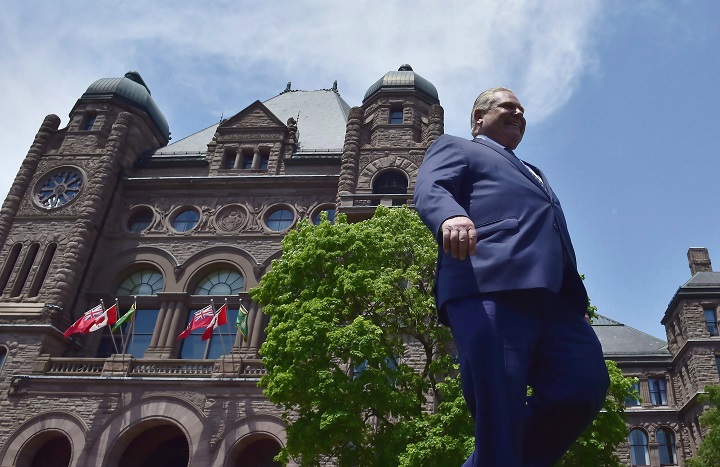TORONTO — Ontario’s fiscal watchdog warned Wednesday that restraining wage growth in the public sector will be a challenge for the new Progressive Conservative government, which has vowed to find billions in “efficiencies” without job cuts.

Financial Accountability Officer Peter Weltman said the government’s efforts to drive down costs will be complicated by recently signed labour agreements that provide workers with wage increases averaging 1.9 per cent over the next few years.
The province’s strong economy and competitive labour market could also mean the government may need to boost wages for health-care workers to fill important positions in hospitals, the FAO said in a report.
“You have strong demand for the programs, which necessitates strong demand for people to fill those jobs and deliver those programs,” Weltman said. “You have a tight supply of those people.”
Collective agreements for more than 146,000 public sector workers also expire this year, the FAO said, and the province’s relatively strong labour market could put pressure on the government for higher wage increases going forward.
The province has employed 645,000 people this year in the public administration, education and health sectors, which accounts for 11 per cent of the total number of salaried workers in the province, the FAO said.
- What is a halal mortgage? How interest-free home financing works in Canada
- Capital gains changes are ‘really fair,’ Freeland says, as doctors cry foul
- Ontario doctors offer solutions to help address shortage of family physicians
- Budget 2024 failed to spark ‘political reboot’ for Liberals, polling suggests
The fiscal watchdog estimated that in 2018, the government will spend just over $41 billion on salaries and wages, accounting for one third of total program spending.
Weltman said that with wages accounting for a large portion of the government budget, it’s hard to look to other areas for cost reductions.
“If your intent or your objective is to try to find a way to manage expenditures then it becomes a very interesting, and potentially difficult, exercise because you have to start to look at how you’re delivering these programs,” he said.
Weltman’s report comes as Premier Doug Ford has pledged to find $6 billion in “efficiencies.” An independent inquiry probing the province’s finances and a line-by-line audit of government spending are expected to help the Tories find ways to meet their goal. Ford has also implemented a management wage freeze across the public sector.
WATCH: Partial sale of Hydro One will cost Ontario $1.8 billion: FAO

At the same time, the Tories have vowed not to cut public sector jobs and have promised to bolster the health-care sector to end overcrowding in hospitals.
Finance Minister Vic Fedeli said the FAO’s report illustrates the need for the independent inquiry and the audit. When asked how the province would constrain government spending without cutting jobs, Fedeli said a review from the auditor general last year had already found approximately a billion dollars in potential savings.
“If you took that and stretched it across the broader public sector you can see there’s going to be efficiencies found that don’t effect the employees at all,” he said.
Interim Liberal leader John Fraser said the Tory government’s spending reviews will be a “context for cuts.”
“The government is going to do what they said they weren’t going to do, which is cut jobs,” he said.
The average public sector worker earns $1,227 a week or roughly $63,800 a year, according to the FAO.



Comments